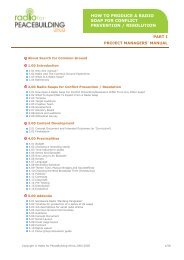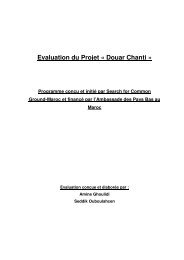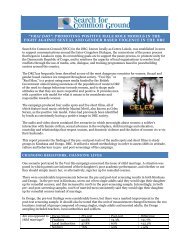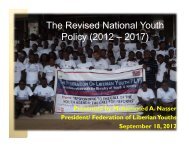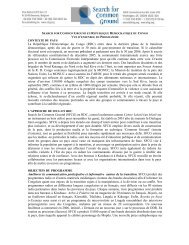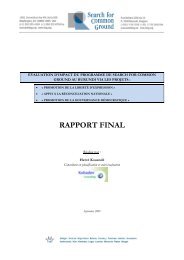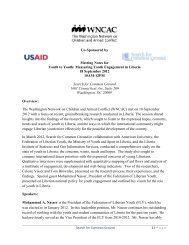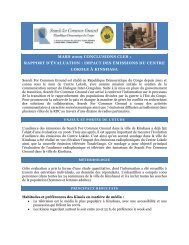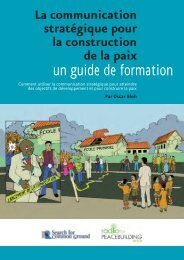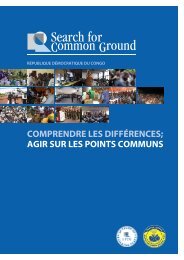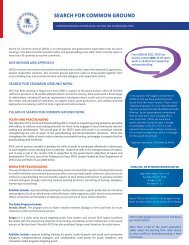The Common Ground Network for Life and Choice Manual
The Common Ground Network for Life and Choice Manual
The Common Ground Network for Life and Choice Manual
Create successful ePaper yourself
Turn your PDF publications into a flip-book with our unique Google optimized e-Paper software.
Appendix 3.10<br />
Exploring Stereotypes – An Exercise<br />
Presenting the Exercise (by the facilitator): [2 minutes]<br />
“<strong>The</strong> following exercise has you take a look at the kind of assumptions <strong>and</strong> stereotypes that operate in the abortion<br />
conflict. This is an opportunity <strong>for</strong> you to clarify who you are, <strong>and</strong> hear others do the same. Often in the abortion<br />
conflict people operate very strongly on the basis of assumptions <strong>and</strong> perceptions of the “other side.” <strong>The</strong>se<br />
assumptions, or stereotypes, often substitute <strong>for</strong> personal knowledge <strong>and</strong> underst<strong>and</strong>ing. This can make people feel<br />
unseen <strong>and</strong> dehumanized. Yet some assumptions are true. It may be hard to claim what is true <strong>for</strong> fear of being<br />
saddled with what is not true.”<br />
Brainstorming Stereotypes: [15 minutes]<br />
1) Have people divide into two groups, one pro-choice, the other pro-life. Give each group flip chart paper <strong>and</strong> a<br />
marker. Have the group designate a recorder.<br />
2) Announce the task:<br />
“Your task in 10 minutes is to create a list of assumptions or stereotypes that you think people on the other side of<br />
the issue hold about you (or people with your view). <strong>The</strong> recorder will write the list on the newsprint, which will be<br />
shared with the other group. In doing this, it may help to think about it this way: Imagine someone with a different<br />
view of abortion learning that you identify as pro-life or pro-choice. What beliefs <strong>and</strong> attitudes do you think they<br />
place on you, or might place on you? Think about experiences you have actually had. Keep in mind that<br />
assumptions <strong>and</strong> stereotypes are not all necessarily untrue or negative.”<br />
3) After the groups have worked <strong>for</strong> ten minutes, have each group finish <strong>and</strong> post its list within easy view. Call<br />
everyone back together.<br />
Sharing Lists: [45 minutes]<br />
1) Give people time to read over both lists.<br />
2) Lead a discussion based on the following questions. After posing a question, allow a minute <strong>for</strong> people to<br />
think. Encourage people to speak from personal experience. Close by asking what’s been learned from this<br />
exercise. Highlight any commonalities that emerge.<br />
Question 1<br />
“Looking at the list that you worked on, is there something on the list that <strong>for</strong> you is particularly painful or<br />
inaccurate? To put it another way, ‘What do you want never to be said about you again?’ In answering, explain<br />
your reaction. Describe your feelings. ["When I hear the phrase _____, I feel _____"] Share any specific<br />
experience you have had that would help people underst<strong>and</strong>.”<br />
Question 2<br />
“Looking at the list that you worked on, is there an attribute on the newsprint that you feel is true about you, at least<br />
in part? Put another way, what on the newsprint is fair to say about you?”<br />
Question 3<br />
“Now look at the list created by the other group. (<strong>The</strong>re are their ideas of what you, or others on your ‘side’, think<br />
about them.) Do you relate to what is there? Does anything stir strong feelings in you?”



